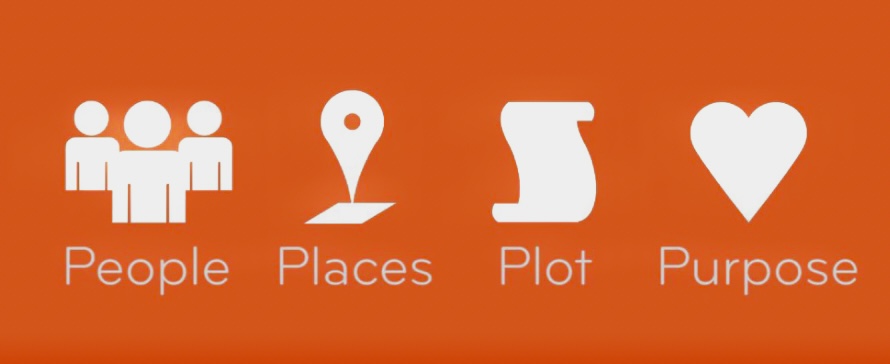
Stories have a fascinating and peculiar impact on our brains. When individuals listen to a story, several key activities occur:
- Neural Coupling: The brain creates a sense of personal involvement, making the listener feel like they are part of the experience;
- Mirroring: The listeners’ brain activity mirrors that of the speaker, resulting in a shared experience;
- Dopamine Release: The brain releases dopamine, a chemical associated with pleasure and reward, due to the engaging nature of the story. This enhances memory retention and accuracy;
- Cortex Activity: Storytelling activates various areas of the brain, including the Broca and Wernicke areas responsible for language function, as well as the motor cortex, sensory cortex, and frontal cortex. This engagement expands beyond mere factual processing.
Marketers understand the power of storytelling in driving sales. The adage “sell benefits, not features” emphasizes the importance of incorporating stories to maximize impact. For instance, instead of selling a drill bit, the focus should be on selling the ability to hang a cherished picture. Emotions are directly linked to the benefits.
Similarly, when promoting Canadian agriculture to consumers, it is crucial to communicate the benefits and establish an emotional connection. Crafting a compelling story requires considering four essential elements: People, Passion, Purpose, and Product.
- People: The story should depict the role played in people’s lives, resonating with the listener’s emotions. Emotion-driven writing is key to convey the desired sentiments effectively.

- Passion: A well-told story can alleviate doubts and build trust in prospects’ minds. Advocating for oneself and the industry necessitates sharing stories that showcase passion, belief, and speaking from the heart. This establishes critical relationships and leaves a lasting impression.
- Purpose: Stories can enhance the value of a product. An experiment conducted in 2009 demonstrated how adding a background story to items sold on eBay significantly increased their perceived value. As an advocate, the purpose is not only to provide accurate information about Canadian agriculture but also to elevate the brand by demonstrating its value to individuals and society.
- Product: A captivating story should not solely focus on the product itself. While the product may be excellent, it is the underlying passion and benefits that make a story truly engaging.
Storytelling is a science, and great storytellers have the ability to captivate and influence their audience while educating them. To enhance storytelling skills, consider the following tips:
Survival Tip
Using the classic story format with a sympathetic protagonist facing conflict, an unsolvable threat, and a hero (you) utilizing unique knowledge and skills, ensure your story is easily captured, remembered, and retold. When developing your story, ask yourself questions that align with the mindset of your target audience. Consider their trust, beliefs, desires, and fears. Use the acronym ‘READ’ to structure your story:
- R: Research your target audience and craft the story to resonate with their experiences;
- E: Establish your story by incorporating a clear beginning, middle, and end, and include the key story elements mentioned earlier;
- A: Add personalized details to make a meaningful connection with the listener;
- D: Distribute your story through mediums or platforms your target audience prefers.
To wrap up
Moreover, considering that the average U.S. citizen consumes approximately 100,500 digital words per day, keeping your story concise and straightforward is essential. Deliver linear content with a clear narrative. Additionally, since images are processed significantly faster than words, incorporate graphics into your stories and messages.
In conclusion, stories have the power to influence our thoughts. By skillfully crafting and sharing stories, we can ethically introduce ideas, thoughts, and emotions into our listeners’ minds to drive change.